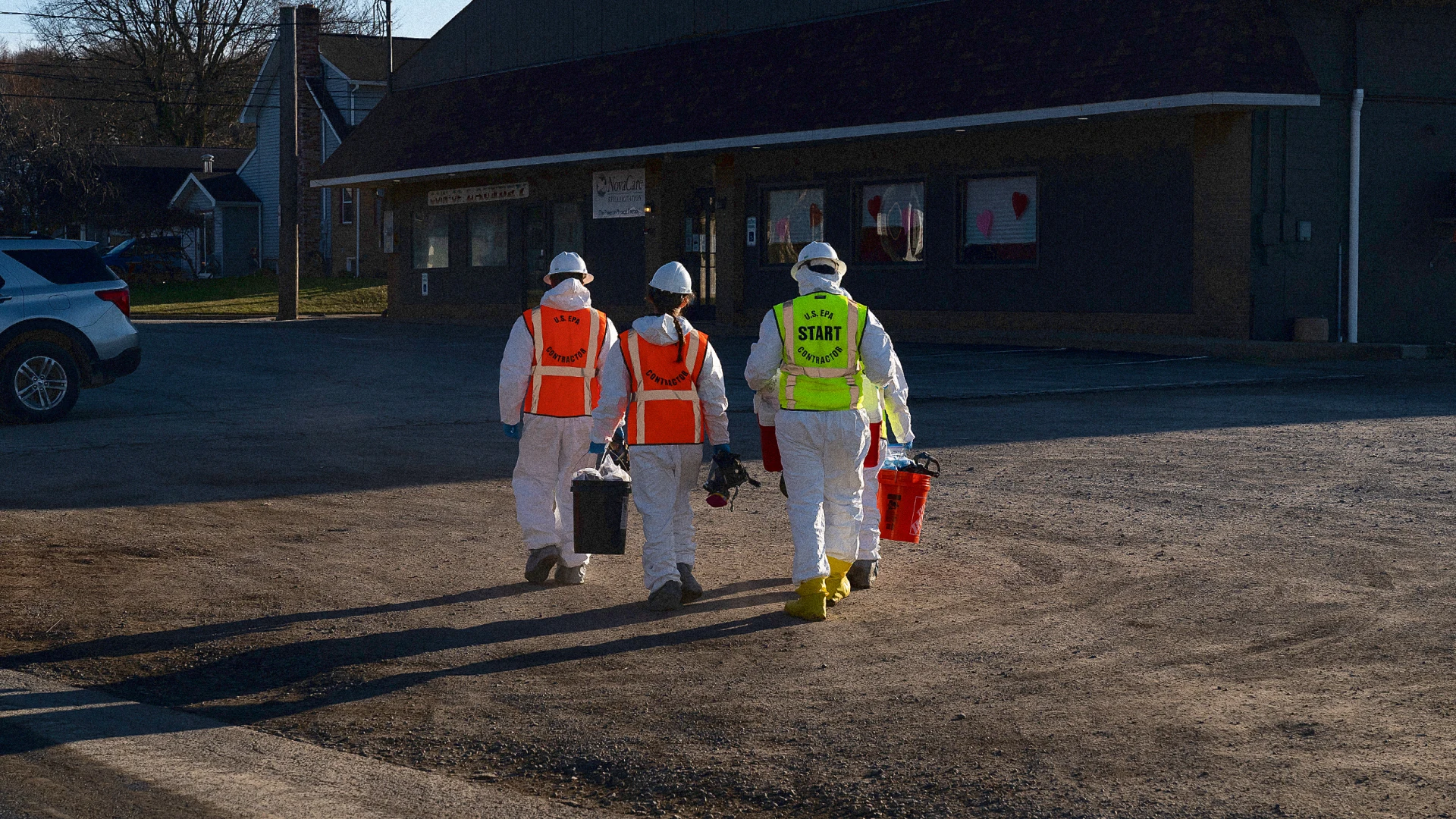Ohio Derailment's Toxic Legacy: Persistent Chemicals In Buildings

Table of Contents
Types of Persistent Chemicals in Buildings
The Ohio derailment released a cocktail of hazardous chemicals, many of which are known for their persistence in the environment and their ability to readily absorb into building materials. Understanding the properties of these chemicals is crucial to assessing the long-term risks. Key chemicals of concern include:
-
Vinyl chloride: This colorless gas is a known human carcinogen, meaning it can cause cancer. Its volatility allows it to spread easily through the air, while its ability to adsorb onto surfaces means it can persist in building materials for extended periods, leading to long-term exposure risks. The effects of vinyl chloride exposure range from liver damage to a rare form of liver cancer called angiosarcoma.
-
Butyl acrylate: This is a colorless liquid with a pungent odor. It's a respiratory irritant, causing immediate effects like coughing and shortness of breath. Long-term exposure can lead to more severe respiratory problems and potential impacts on the eyes and skin.
-
Other chemicals: The derailment also released other concerning chemicals, including but not limited to ethylene glycol monobutyl ether and ethylhexyl acrylate. The long-term effects of exposure to these mixtures are still being investigated, highlighting the complexity of assessing the complete Ohio Derailment's Toxic Legacy. Further research is needed to fully understand the synergistic effects of these chemicals.
Health Risks Associated with Chemical Exposure
Exposure to the chemicals released during the Ohio train derailment presents a range of serious health risks, both short-term and long-term. The severity of the effects depends on several factors, including the concentration of chemicals, duration of exposure, and individual susceptibility.
-
Respiratory problems: Short-term exposure can cause immediate respiratory irritation, including coughing, wheezing, and shortness of breath. Long-term exposure increases the risk of chronic respiratory illnesses like asthma and bronchitis.
-
Cancer risks: Several chemicals released, notably vinyl chloride, are known carcinogens, significantly increasing the risk of various cancers over time.
-
Neurological effects: Some of these chemicals can affect the nervous system, leading to neurological symptoms such as headaches, dizziness, and impaired cognitive function.
-
Reproductive health issues: Exposure to certain chemicals can negatively impact reproductive health, affecting both fertility and fetal development. Children and pregnant women are particularly vulnerable. The elderly and individuals with pre-existing conditions are also at increased risk of more severe health outcomes.
Contamination Pathways and Spread
The chemicals released from the derailment entered buildings through various pathways:
-
Airborne contamination: The volatile nature of many of these chemicals meant that wind patterns played a significant role in dispersing them. Building ventilation systems could have inadvertently drawn contaminated air inside, leading to indoor air pollution.
-
Surface contamination: Chemicals settled on surfaces, readily absorbed into porous materials like drywall, carpets, and insulation. This led to the persistent contamination of building interiors.
-
Water contamination: Runoff from contaminated areas could have leached into groundwater, posing further risks for long-term contamination. The potential for water contamination necessitates thorough testing and remediation efforts to prevent future exposure.
Mitigation and Remediation Efforts
Cleaning up and remediating buildings contaminated by the Ohio derailment presents significant challenges. The complexity of the chemical mixture and the potential for widespread contamination require comprehensive and carefully planned efforts. Current remediation strategies include:
-
Air quality testing and monitoring: Continuous monitoring is essential to assess the extent and duration of airborne contamination.
-
Surface cleaning and decontamination: This involves specialized cleaning procedures to remove or neutralize chemicals from surfaces. This may include removal of contaminated materials in severely impacted areas.
-
Building demolition: In cases of severe contamination where remediation is not feasible or cost-effective, demolition might be the only viable option.
-
Long-term health monitoring of affected residents: Ongoing monitoring of the health of residents in affected areas is crucial to track long-term effects and provide necessary medical care.
Legal and Regulatory Responses
The Ohio train derailment has triggered a wave of legal and regulatory responses aimed at addressing the contamination and holding responsible parties accountable. Key developments include:
-
Environmental Protection Agency (EPA) involvement: The EPA is actively involved in overseeing the cleanup efforts and monitoring the environmental impact.
-
State and local government regulations: Ohio and local authorities are implementing regulations to control the spread of contamination and ensure the safety of residents.
-
Legal actions against responsible parties: Lawsuits have been filed against Norfolk Southern and other involved parties, seeking compensation for damages and remediation costs. The legal proceedings will play a crucial role in determining responsibility and setting precedents for future cases.
Conclusion
The Ohio Derailment's Toxic Legacy extends far beyond the immediate aftermath, with persistent chemical contamination in buildings posing significant and long-term health risks. The volatile and absorbent nature of the released chemicals necessitates ongoing monitoring, comprehensive remediation efforts, and a thorough investigation into the causes of the disaster. The health of affected residents is paramount, and long-term health monitoring is crucial. We must learn from this tragedy to prevent future incidents and to address the lasting impact of this devastating event. Stay informed about the ongoing situation, advocate for stronger regulations and safety measures, and support the affected communities. Continued research into the long-term effects of the chemical exposure is essential to fully understand and mitigate the Ohio Derailment's Toxic Legacy.

Featured Posts
-
 Mel Kiper On Aaron Rodgers How His Future Affects The Steelers 2025 Nfl Draft Strategy
May 22, 2025
Mel Kiper On Aaron Rodgers How His Future Affects The Steelers 2025 Nfl Draft Strategy
May 22, 2025 -
 Understanding The Federal Election Results Their Significance For Saskatchewan Politics
May 22, 2025
Understanding The Federal Election Results Their Significance For Saskatchewan Politics
May 22, 2025 -
 Real Madrid In Yeni Teknik Direktoerue Arda Gueler In Rolue Ne Olacak
May 22, 2025
Real Madrid In Yeni Teknik Direktoerue Arda Gueler In Rolue Ne Olacak
May 22, 2025 -
 Investigating The Reasons Behind Core Weave Crwv S Recent Stock Price Surge
May 22, 2025
Investigating The Reasons Behind Core Weave Crwv S Recent Stock Price Surge
May 22, 2025 -
 Insider Denies Major Aaron Rodgers Steelers Announcement At Pat Mc Afee Show
May 22, 2025
Insider Denies Major Aaron Rodgers Steelers Announcement At Pat Mc Afee Show
May 22, 2025
